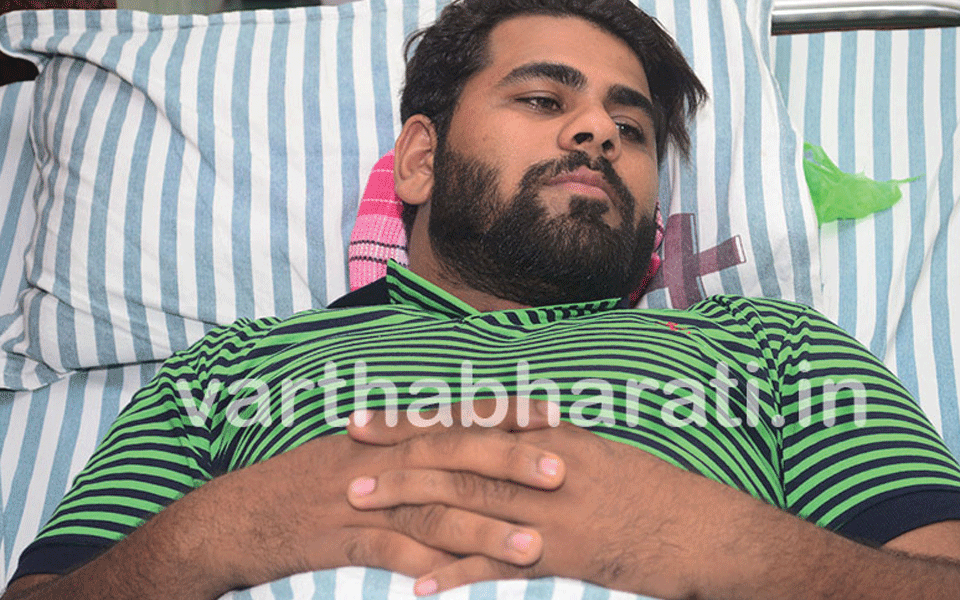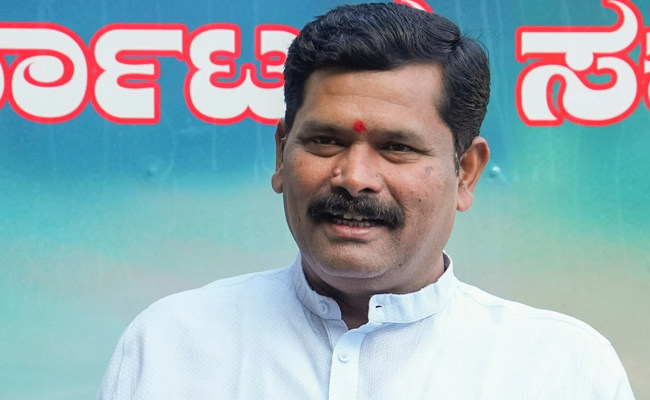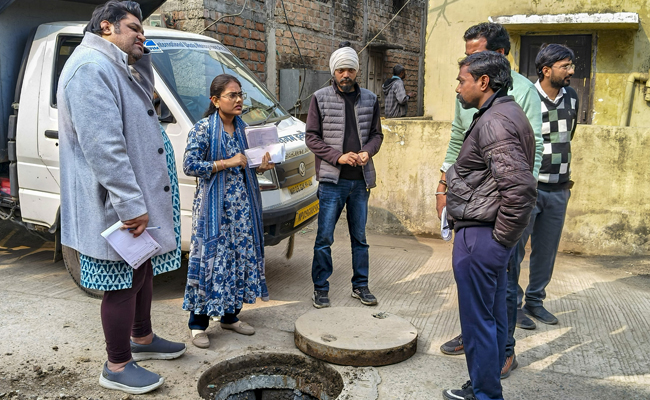Mangaluru: "You Muslims always need Hindu girls ? Didn't you intend to take her to Ponnani for conversion ? Beef eaters like you should not be believed... Police abused me this way and then pushed me into the station godown where they stripped me and thrashed me indiscriminately. They gagged me with socks and plastered my mouth, in the process three of their lathis broke, they also tortured by giving me electric shock."
This is how Farveez alias Pachhu Bellare who was reportedly subject to atrocities by Subrahmanya police station personnel on December 21, narrated his plight to this reporter at a private hospital in Mangaluru where he is admitted for treatment .
"No one should suffer the way I have suffered. Those who tortured me are unfit to serve the Department. Along with the cops two auto drivers too tortured me. All of them must get stern punishment," demanded Farveez.
Speaking to Vartha Bharathi, he said he produces regional language albums and was in Tamil film industry since two years. He also said that he knew the Mysuru based actress with whom he was seen in a lead role in the film "Veruvathuli" set to be released soon. Farveez claims that the actress had asked him to come to Subrahmanya where she had to offer a Harake on December 20. "There is no affair between us. As she was a guest, I had picked her up from the Subrahmanya Railway Station and took her to the temple. Though she intended to return the same day, as the pooja was not complete she decided to stay back. I asked an elderly couple at the temple premises to take care of her and returned home," says Farveez.
"The next morning she telephoned me at 6.30 am, her voice was feeble and she asked me to come near the temple. However, when I went there she was nowhere, but an auto stopped near me and took me to the station where I was tortured and attempts made to project me and the actress as lovers," he said.
He also alleged that he overheard a cop speaking over mobile phone and telling the person on the other end to dump him in a gorge in Gundya.
"The police asked me to keep my mouth shut regarding the torture lest I would be projected as a terrorist who had come to plant a bomb in Subrahmanya. After I was released, I returned home and remained silent. When the video went viral the SP has suspended three but all of the accused must be permanently suspended," he demanded.
"As I faced severe pain in my waist and leg I got myself admitted to the hospital," he said and demanded stern action against those who tortured him.
Let the Truth be known. If you read VB and like VB, please be a VB Supporter and Help us deliver the Truth to one and all.
Dhaka (PTI): A senior Bangladesh Cricket Board (BCB) official calling former captain Tamim Iqbal "an Indian agent" has not gone down well with the players in the country.
Tamim, one of the finest openers to have come out of Bangladesh, had advised the BCB to not be driven by emotion while deciding the way forward on the national team's participation in the T20 World Cup in India.
Nazmul, chairman of BCB finance committee, called the left-hander opener "an Indian agent" in a Facebook post.
"This time, the people of Bangladesh witnessed, with their own eyes, the emergence of yet another proven Indian agent," he wrote.
The post received immediate backlash from former and current cricketers, including Taskin Ahmed, Momimul Haque and Taijul Islam.
Even the Cricketers' Welfare Association of Bangladesh (CWAB) expressed shock at Nazmul's comments.
"A comment made by BCB director M Nazmul Islam regarding former national captain Tamim Iqbal has come to the attention of the Cricketers' Welfare Association of Bangladesh. We are stunned, shocked, and outraged by it.
"Such a remark by a board official about the most successful opener in Bangladesh's history, who represented the country for 16 years, is utterly condemnable.
"Not only because it concerns a player like Tamim, but such comments about any cricketer of the country are unacceptable and insulting to the entire cricketing community," the players' body said in a statement.
The 36-year-old Tamim played 70 Tests, 243 ODIs and 78 T20 Internationals for his country in a fairly accomplished career.
"We strongly protest against this comment. When a responsible board director makes such remarks on a public platform, it also raises serious questions about the code of conduct of board officials," it said.
"We have already submitted a protest letter to the BCB president, demanding a public apology from the concerned board director and that he be brought under accountability. We hope the BCB president will take appropriate action as soon as possible," CWAB added.
Bangladesh wrote to the International Cricket Council to move their T20 World Cup games out of India after the BCCI instructed IPL franchise KKR to release Mustafizur Rahman ahead of the 2026 edition without giving a specific reason.
"Cricket is the life of Bangladesh. A recent comment surrounding a former national captain who has made a major contribution to the game has caused many to reflect," said pacer Taskin.
"I believe that such remarks directed at a former cricketer of the country are not helpful in the interest of Bangladesh cricket. I hope the concerned authorities will consider the matter seriously and adopt a more responsible stance in the future," he said.
Mominul added: "The comment made by BCB director M Nazmul Islam regarding former national captain Tamim Iqbal is completely unacceptable and insulting to the country's cricketing community. Such behaviour towards a cricketer is in direct conflict with the board's responsibility and ethics," said Mominul.
"A senior cricketer was not given even the minimum respect; instead, he was deliberately humiliated in public. Such remarks show a lack of even basic decorum regarding where and how to speak while holding such a high responsibility.
"I strongly condemn this comment and firmly demand a public apology from the concerned director and that he be brought under accountability. I call upon the BCB to take swift and strict action," said Mominul.





